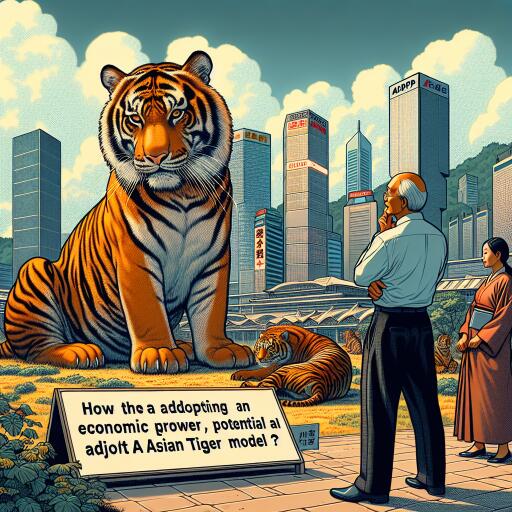Charting a Path Towards Sustainable Development: The Asian Tiger Blueprint
In a recent insightful address during the inaugural convocation ceremony of a prominent educational institution in Nigeria, a distinguished former leader in the national landscape of science and engineering shared a visionary approach for Nigeria to tackle its persistent developmental struggles. His proposed strategy involves taking inspiration from the renowned Asian Tiger model, focusing on the pivotal role of technical education and the adoption of frontier technologies.
The concept of the Asian Tiger model centers around rapid industrialization propelled by strategic investments in education and technology. This model has been instrumental in catapulting various Asian economies onto the global stage, transforming them into industrial powerhouses within a few short decades. The recommendation for Nigeria is to emulate this successful blueprint, leveraging technical education as the foundational pillar for national development. This approach is not just about economic growth but encompasses addressing the multifaceted challenges the country faces, from security concerns to economic instability.
At the heart of this proposal is the idea that technical education is not a luxury but a necessity, ranked second only to the imperatives of food and national security. This perspective places education as a critical element in resolving the nation’s security and economic tribulations. Highlighting a pressing need, the proposal underscores the nation’s urgent requirement to halt the depreciating value of its currency and spearhead a return to manufacturing, utilizing local raw materials to foster economic independence and resilience.
The discourse also sheds light on the prominent role of cutting-edge technologies, often referred to as frontier technologies, in sculpting the modern socio-economic landscape. These include advancements such as artificial intelligence, robotics, the Internet of Things (IoT), big data, blockchain technology, additive manufacturing, autonomous vehicles, unmanned aerial vehicles, gene editing, 5G networks, and revolutionary high-efficiency solar cells. These innovations are not only redefining possibilities but are also at the crux of the fourth industrial revolution, offering unprecedented opportunities for sustainable development.
However, the advent of these technologies brings with it the potential for widening the socio-economic divide, intensifying the disparity between nations and individuals with access to these technological advancements and those without. This scenario underlines a stark warning that without strategic intervention, countries like Nigeria risk remaining perpetual consumers in the global economy, trailing behind in the march towards technological empowerment and sovereignty.
Embracing the Asian Tiger model, therefore, is posited not merely as an option but as an imperative for Nigeria. The model advocates for nurturing a robust technical education framework and fostering a conducive environment for the adoption and adaptation of frontier technologies. This holistic approach aims at bridging the digital divide, ensuring the nation’s transition from a consumer-oriented to a creator and innovator ethos, ultimately enabling Nigeria to claim its rightful place on the global stage.
In conclusion, this visionary paradigm offers a clear, actionable roadmap for Nigeria’s journey towards overcoming its developmental dilemmas through the thoughtful application of the Asian Tiger model, prioritizing technical education, and the strategic embrace of frontier technologies. The collective adoption of these strategies promises not just to address the immediate challenges but to pave the way for a future of prosperity, security, and innovation for Nigeria and its citizens.










